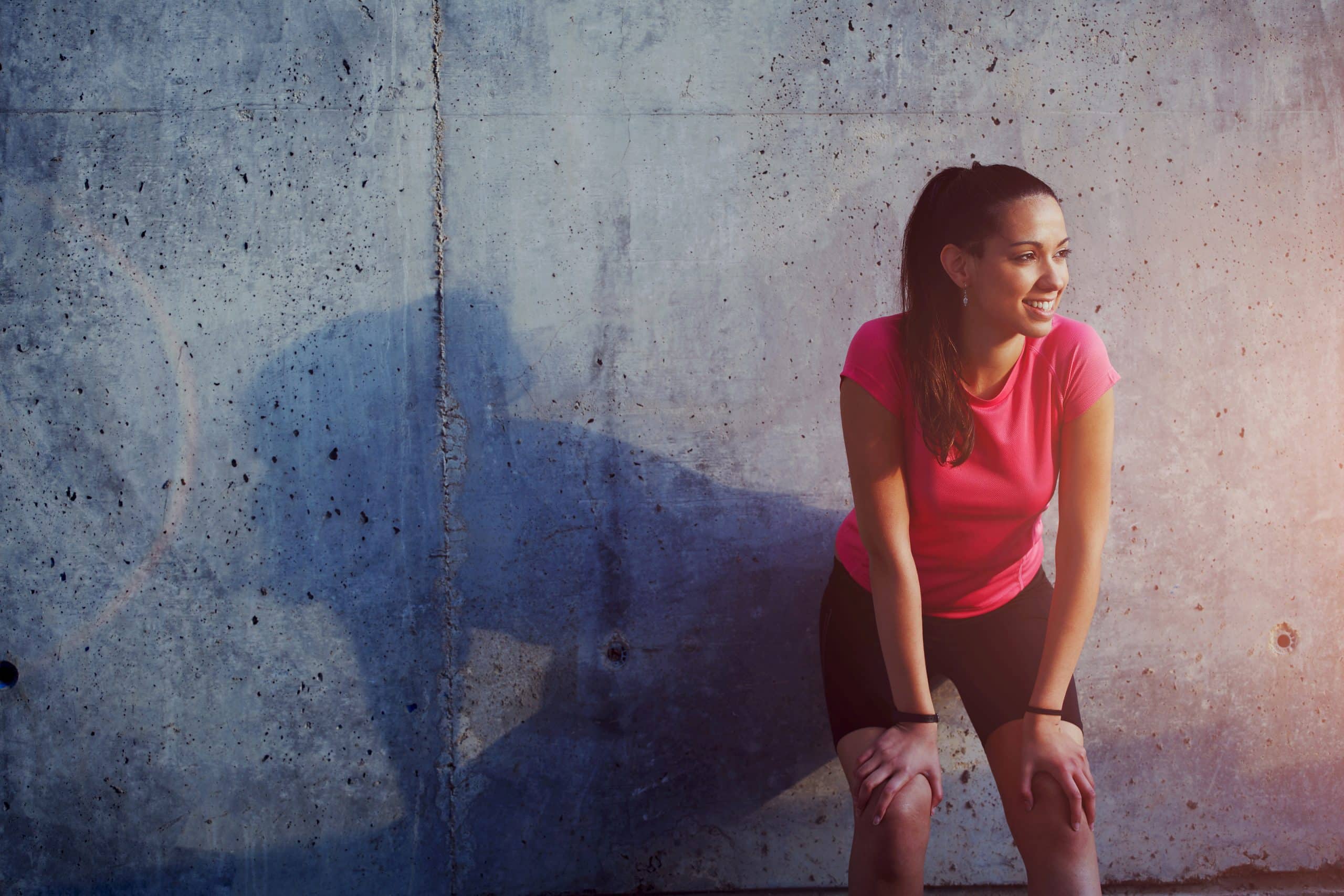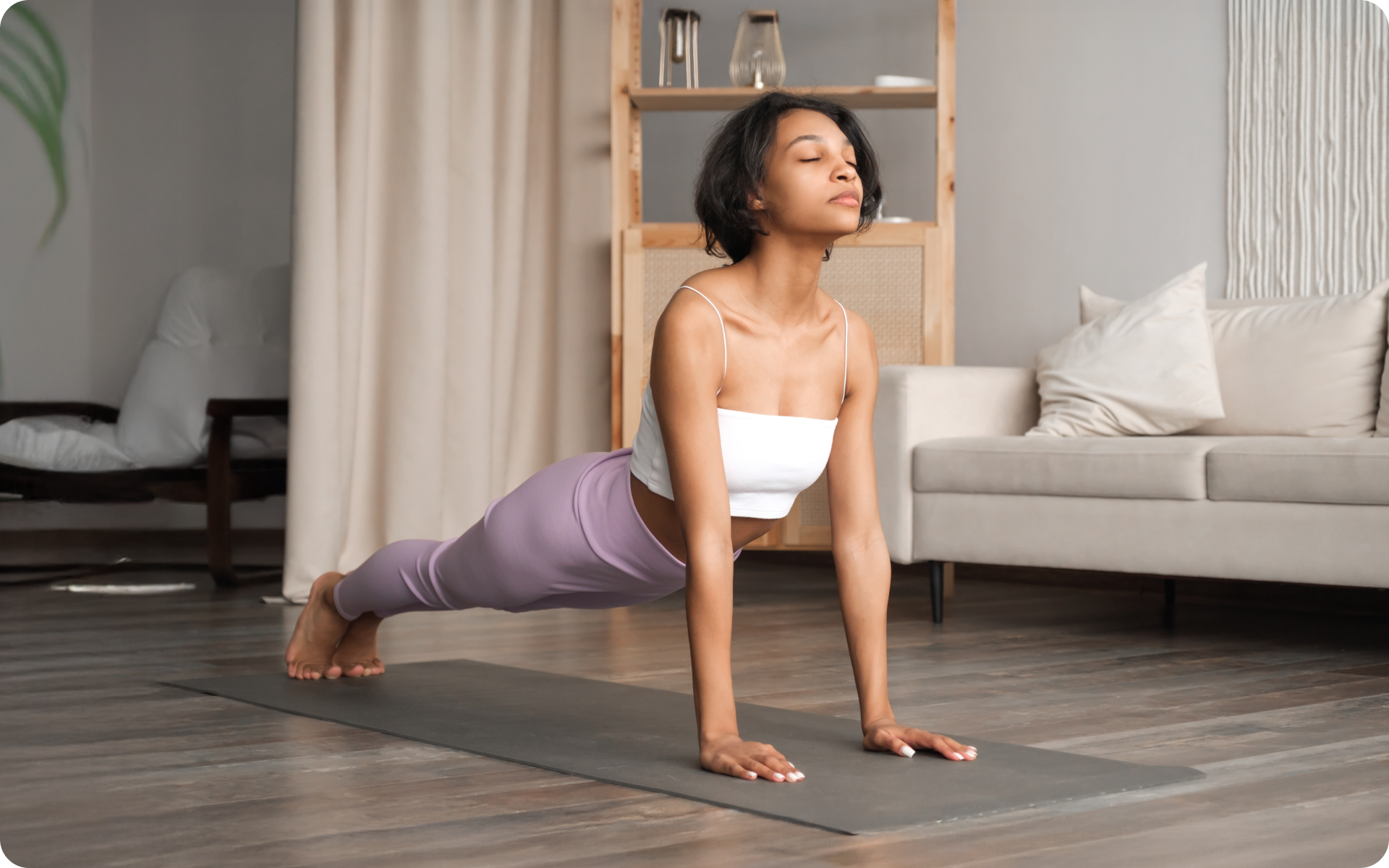Medical events such as strokes, traumatic injuries, and surgeries can have a significant impact on a person’s physical, cognitive, and emotional abilities. The impact may be as subtle as mild discomfort to as severe as a complete loss of function.
After such life-altering events, getting back some or all of the affected functions becomes a priority. Rehabilitation therapy is necessary to aid this recovery process (10). This intervention is usually tailored to the individual’s specific needs and performed under the supervision of multidisciplinary healthcare professionals.
In this guide, we’ll explore seven types of rehabilitation therapy and their benefits, providing a comprehensive understanding of the recovery journey.
What Is Rehabilitation Therapy?
Rehabilitation therapy, aka rehab, is a treatment program that aims to improve and restore an individual’s physical, cognitive, and/or emotional functions after injury, illness, or surgery. It involves various techniques such as exercises, activities, education, and counseling to promote healing and functional improvement (10).
The primary goal of rehabilitation therapy is to help individuals regain the ability to perform daily tasks with maximum independence. This could mean anything from learning how to walk again after a stroke to relearning how to cook meals or drive a car.
Rehabilitation therapy is not a one-size-fits-all approach; it is tailored to the individual’s specific needs, abilities, and goals. It may involve a combination of different therapies based on the type and severity of the condition.
If you struggle to even flirt with the idea of giving up your favorite foods or working out till your legs give way – BetterMe app is here to breathe a fresh perspective into the way you view the weight loss process! Check out the app and experience the fun side of fitness and dieting with BetterMe!
What Are The Main Reasons for Needing Rehab Therapy?
The main reasons for needing rehab therapy are; recovering from an injury, illness, or surgery; managing chronic conditions and disabilities; improving mobility, strength, and balance; reducing pain; overcoming speech or language disorders; and addressing emotional or psychological challenges.
Recovery
Recovery is one of the primary reasons for needing rehabilitation therapy. After an injury, illness, or surgery, individuals may experience temporary or permanent impairments that affect their daily performance. Rehab helps these individuals regain function and independence (6).
Management of Chronic Conditions and Disabilities
Chronic conditions can cause functional limitations that affect the individual’s quality of life. Rehabilitation therapy can help manage these conditions by improving mobility, reducing pain, and teaching coping strategies (5).
Improving Mobility, Strength, and Balance
Rehabilitation therapy is often prescribed to individuals who have difficulty moving or performing activities due to such limitations such as age, neurological conditions, or musculoskeletal disorders (7). Through targeted exercises and techniques, rehab can improve strength, mobility, and balance.
Reducing Pain
Chronic pain is a common reason for seeking rehabilitation therapy. It may be related to an injury, surgery, or medical conditions.
Physical therapists use various modalities such as heat/cold therapy, soft tissue mobilization, and graded exercise to manage pain and promote healing (6).
Rehab also includes education on pain management techniques and activity modification strategies.
Overcoming Speech or Language Disorders
Speech therapy is a type of rehabilitation therapy commonly used to treat speech and language disorders. The therapist uses various techniques to help individuals improve their communication skills (5).
Addressing Emotional or Psychological Challenges
Rehabilitation therapy can also address emotional or psychological challenges that may arise from an injury, illness, or surgery.
For example, occupational therapists may work with individuals who have experienced a traumatic brain injury to help them adjust to changes in their movement patterns and abilities to maximize their level of independence.
Read more: 6 Cold Water Therapy Benefits Worth Noting
5 Types of Rehabilitation Therapy and Their Benefits
Physical Therapy
Physical therapy is the most common type of rehab. It is often prescribed after injuries or surgeries to aid recovery and prevent future complications (4).
Some medical events that may require physical therapy include:
- Orthopedic injuries
- Neurological conditions
- Cardiopulmonary conditions
Physical therapy is beneficial because it helps with:
- Pain relief
- Improvement in strength, flexibility, and range of motion
- Restoration of function and mobility
- Prevention of future injuries
Further reading is available at our cold water therapy benefits blog.
Occupational Therapy
Occupational therapy is focused on helping individuals regain the ability to perform daily tasks, such as dressing, cooking, and using the bathroom (9).
Injuries, illnesses, and disabilities that may require occupational therapy include:
- Hand and wrist injuries
- Neurological conditions
- Age-related changes in functional independence with daily activities
Occupational therapy can:
- Improve motor skills and coordination
- Teach adaptive techniques for daily tasks
- Provide equipment recommendations to improve function and independence
Speech Therapy
Speech therapy is a type of rehabilitation therapy that focuses on the diagnosis and treatment of communication and swallowing disorders (8).
Speech therapy is beneficial because it helps with:
- Improving speech, language, and swallowing function
- Teaching alternative communication methods (sign language, use of devices)
- Addressing voice disorders
Cognitive Rehabilitation
Cognitive rehabilitation is a type of therapy that focuses on improving cognitive function, such as memory, attention, and problem-solving skills (1).
Cognitive rehabilitation can help individuals:
- Regain lost cognitive abilities
- Learn new strategies for managing daily activities
- Improve overall quality of life
Whether you’re a workout beast or just a beginner making your first foray into the world of fitness and dieting – BetterMe has a lot to offer to both newbies and experts! Install the app and experience the versatility first-hand!
Vocational Rehabilitation
Vocational rehabilitation is a type of therapy that helps individuals with disabilities or chronic conditions to prepare for, find, and maintain employment (11).
It may include:
- Career counseling and planning
- Job coaching and training
- Assistance with job accommodations and modifications
Vocational rehabilitation can help individuals:
- Overcome barriers to employment
- Learn new skills and gain confidence in the workplace
- Achieve greater independence and financial stability.
In addition to these specific types of rehabilitation therapy, there are also holistic approaches that may be used, such as yoga, art therapy, and music therapy. These methods aim to promote overall well-being and can be beneficial in conjunction with traditional therapies.
In our Somatic Healing Techniques blog, we explore how mind-body practices, such as meditation can improve physical, emotional, and cognitive functioning. These techniques can be used in conjunction with traditional rehabilitation therapies to enhance the healing process.
When Should You Do Rehab Therapy?
Rehab therapy is typically recommended after an injury, illness, or surgery that affects your ability to perform daily tasks and activities. It may also be prescribed for chronic conditions that impact your mobility, communication, or cognitive function (6).
You should only do rehabilitation therapy under the guidance of a trained medical professional, such as a physical therapist or occupational therapist. They will assess your individual needs and create a personalized treatment plan.
If you are unsure if you may benefit from rehabilitation therapy, consult with your physician or healthcare provider for guidance. They can help determine if it is the right path for your individual needs and goals.
Early intervention and consistent participation in rehab therapy can lead to better outcomes and improve one’s overall quality of life.
How Can I Rehabilitate My Body?
You can rehabilitate your body by participating in various types of rehabilitation therapy, as well as incorporating full-body physical therapy exercises into your daily routine.
According to National Jewish Health, exercise and staying active are important parts of rehab for individuals with chronic diseases (3).
Performing physical therapy exercises at home, as recommended by your therapist, can aid in the rehabilitation process.
Here are 10 strengthening exercises to try at home. If you experience any pain or discomfort while doing these exercises, stop immediately and consult with your therapist.
Axial Extension
This exercise combats forward-leaning posture and strengthens your back muscles. To perform this exercise:
- Sit on a chair with your feet flat on the ground.
- Place your hands behind your head, interlacing your fingers.
- Pull your elbows back while squeezing your shoulder blades together.
- Hold for 5 seconds before releasing.
- Repeat 10 times.
Trunk Rotation
This exercise helps improve mobility in your spine and can also aid in reducing back pain. To perform this exercise:
- Sit on a chair with your feet flat on the ground.
- Place your hands behind your head, interlacing your fingers.
- Slowly twist your upper body to one side while keeping your hips facing forward.
- Hold for 5 seconds before returning to the starting position.
- Repeat on the other side.
Knee-tuck Crunches
This exercise targets your core muscles which aid in balance and stability. To perform this exercise:
- Sit on a chair with your feet flat on the ground.
- Place your hands behind your head, interlacing your fingers.
- Lift one knee towards your chest while bringing your opposite elbow to touch it.
- Return to the starting position and repeat on the other side.
- Repeat 10 times on each side.
Wall Push-ups
Wall push-ups are a modified version of traditional push-ups that can help strengthen your upper body muscles. To perform this exercise:
- Stand facing a wall with your feet shoulder-width apart.
- Place your hands on the wall at shoulder height and lean in towards the wall.
- Push away from the wall until your arms are fully extended.
- Return to the starting position and repeat 10 times.
Single Leg Stands
This exercise improves balance and stability by focusing on one leg at a time. To perform this exercise:
- Stand behind a chair with your feet shoulder-width apart.
- Place one hand on the back of the chair for support.
- Lift one leg off the ground and hold for 10 seconds.
- Repeat on the other side.
- Aim to do 3 sets of 10 repetitions on each leg.
Shoulder Blade Squeeze
As part of rehabilitation therapy for the shoulder, this exercise helps improve posture and strengthen the muscles in your upper back. To perform this exercise:
- Sit on a chair with your feet flat on the ground.
- Place your hands behind your head, interlacing your fingers.
- Squeeze your shoulder blades together while keeping your elbows out to the sides.
- Hold for 5 seconds before releasing.
- Repeat 10 times.
Read more: Somatic Experiencing Therapy: A Guide to Getting In Touch With Your Innermost Self
Dowel Exercise
The dowel exercise is great for improving shoulder mobility and range of motion. To perform this exercise:
- Hold a dowel or broomstick with both hands at shoulder width.
- Lift the dowel above your head while keeping your arms straight.
- Slowly lower the dowel behind your head, bending your elbows as needed.
- Return to the starting position and repeat 10 times.
- Do not force the movement if it causes pain or discomfort.
Modified Knee Bends
As part of knee rehabilitation therapy, this exercise helps strengthen the muscles in your legs and improve your range of motion. To perform this exercise:
- Stand behind a chair with your feet shoulder-width apart.
- Hold onto the back of the chair for support.
- Slowly bend one knee and lower yourself towards the ground.
- Return to standing position and repeat 10 times on each leg.
Hip Abduction with Resistance Band
Using a resistance band adds an extra challenge to this exercise, helping improve hip stability and strength. To perform this exercise:
- Tie a resistance band around your ankles.
- Stand with your feet shoulder-width apart.
- Slowly lift one leg out to the side against the resistance of the band.
- Return to the starting position and repeat on the other side.
- Aim for 3 sets of 10 repetitions on each leg.
These are just a few examples of exercises that can be incorporated into your rehabilitation therapy routine.
Check out our Muscle Recovery Time guide to know the right balance between rest and exercise for optimal recovery.
FAQs
What Are the 5 Goals of Rehabilitation?
The 5 goals of rehabilitation are (5):
- Pain management
- Increased range of motion and flexibility
- Improved strength and endurance
- Restoring functional mobility
- Enhancing overall quality of life
Rehabilitation therapy aims to help individuals overcome physical limitations, reduce pain, and improve their ability to perform daily tasks.
What Is The Most Important Part of Rehabilitation?
The most important part of rehabilitation is adherence to the prescribed treatment plan. This includes following the recommended exercises, attending therapy sessions regularly, and making any necessary lifestyle changes to aid recovery.
What Are The Benefits of Rehabilitation?
The benefits of rehabilitation include (7):
- Improved physical function
- Reduced pain and discomfort
- Increased independence and ability to perform daily tasks
- Better overall quality of life
- Prevention of future injuries or relapses
Rehabilitation can also have a positive impact on mental and emotional well-being, as it helps individuals regain confidence and control over their bodies.
The Bottom Line
Rehabilitation therapy is a vital aspect of healthcare that helps individuals recover from injuries, illnesses, and other medical events. It not only focuses on physical healing but also has positive impacts on emotional and psychological well-being. By utilizing various modalities and techniques, rehabilitation therapists help individuals regain strength, mobility, balance, and overall function, improving their quality of life and overall well-being.
DISCLAIMER:
This article is intended for general informational purposes only and does not serve to address individual circumstances. It is not a substitute for professional advice or help and should not be relied on for making any kind of decision-making. Any action taken as a direct or indirect result of the information in this article is entirely at your own risk and is your sole responsibility.
BetterMe, its content staff, and its medical advisors accept no responsibility for inaccuracies, errors, misstatements, inconsistencies, or omissions and specifically disclaim any liability, loss or risk, personal, professional or otherwise, which may be incurred as a consequence, directly or indirectly, of the use and/or application of any content.
You should always seek the advice of your physician or other qualified health provider with any questions you may have regarding a medical condition or your specific situation. Never disregard professional medical advice or delay seeking it because of BetterMe content. If you suspect or think you may have a medical emergency, call your doctor.
SOURCES:
- Brief overview and assessment of the role and benefits of cognitive rehabilitation (2015,nih.gov)
- Cardiac Rehabilitation (2023,nih.gov)
- Exercise, Healthy Eating and Lung Disease (n,d,nationaljewish.org)
- Physical therapy (2020,nih.gov)
- Rehabilitation (2019,medlineplus.gov)
- Rehabilitation (2023,who.int)
- The 7 Benefits of Rehabilitation (2020,ravenscrofthealth.co.uk)
- What is speech therapy? (2023,nih.gov)
- What is occupational therapy? (2020,nih.gov)
- What is rehabilitation? An empirical investigation leading to an evidence-based description (2020,nih.gov)
- Vocational rehabilitation (2003,nih.gov)














